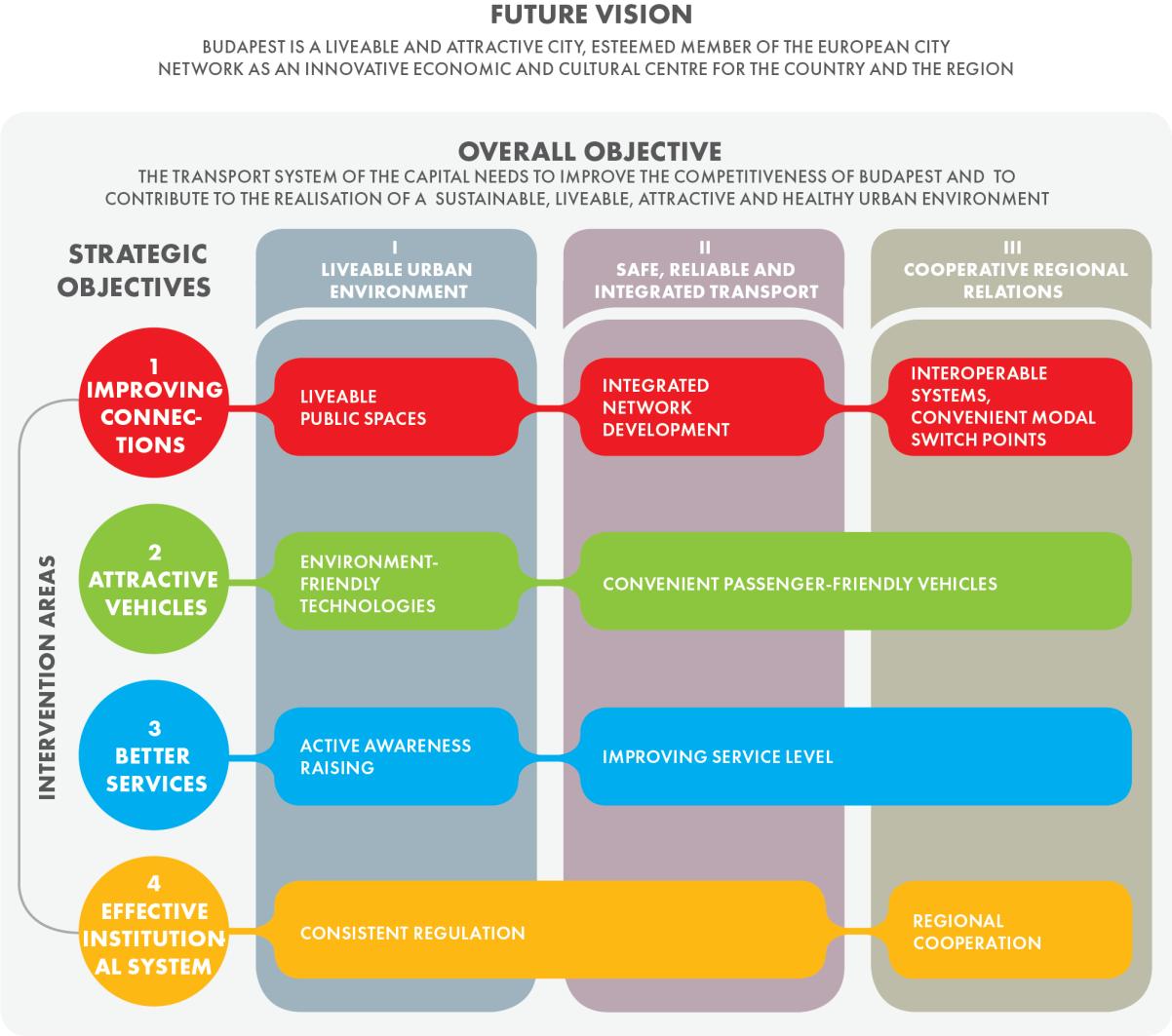
2 minute read
of intervention
presented an overall mobility goal that branch into three strategic goals (Figure 54): i. livable urban environment; ii. safe, reliable, and integrated transport; iii. cooperative regional relations. Therefore, BMT stated that achieving these three goals and consequently, the so much desired integration from SUMPing will cease the unilaterally sectoral, sub-sectoral, and transport-based paradigm likewise the limited approach of the Moreover, BMT has stablished four intervention areas infrastructure, vehicles, services and the institutional system which connects the transport development framework to the strategic objectives envisioning a holistic approach.
Figure 54. Source: BKK Budapesti Közlekedési Központ (2019a) Hence, BMT clearly has shared its vision and objectives, considering all transport modes and mobility components. However, the participatory approach mentioned many times as stated in the 4
Advertisement
th Step, has
not been shared much information regarding its proper process. Under those circumstances, the lack of transparency could weaken the local community identity instead of enhancing it, as has been acclaimed by the SUMP guidelines.
Step 6 set targets and indicators: BMT has not defined strategic indicators and measurable targets for its objectives. Although Volume I, through chapters 1 to 4, has defined specific objects and described their measures related to the four intervention areas, it did not address any strategic indicators or measurable targets. However, the previous plan from 2015 version is very similar to Volume I of the most recent version, which is the one analyzed for this thesis. Although, curiously, the previous version has presented some extra information that has been taken away from 2019. For instance, it has displayed four major strategic indicators and measurable targets associated with the main intervention areas, and those indicators and targets are not displayed anymore in the most recent version, apart from the modal split. In addition, the BMT from 2014 at the end of the plan in a chapter called C. Evaluation , in the subchapter C.2 Summary of the ex-ante evaluation which both sections do not exist anymore in the 2019 version has even mentioned this lack of indicators:
In its current form, the BMT determines indicators only for the intervention areas. According to the author of the ex-ante evaluation, defining good indicators for the complex goals is an important and urgent practical task and such indicators are definitely required. The completion and the spirit of the BMT represent a major progress in strategic transport planning for Budapest, yet it will have a real impact only if the approach and the consequential principles will be applied in the subsequent phases of programming, too. The projects will also be implemented in that spirit instead of building false strategic ideologies around definite project ideas.
(BKK Budapesti Közlekedési Központ, 2015, p. 105)
However, after four years, instead of adding the missing strategic indicators and targets to the updated version, it took away the few that existed before. In summary, Figure 55 recaps the BMT analyses from SUMP Cycle Phase 2, in which, from the six activities in total, two have been covered, another two have been considered partially covered, and two others have remained unclear.










